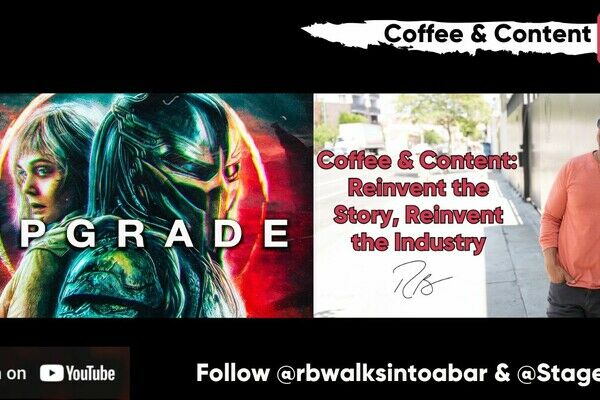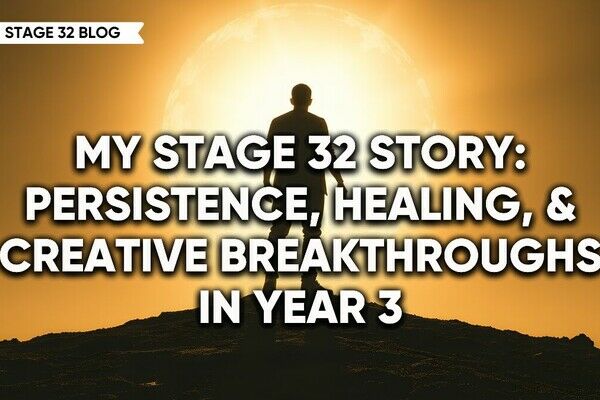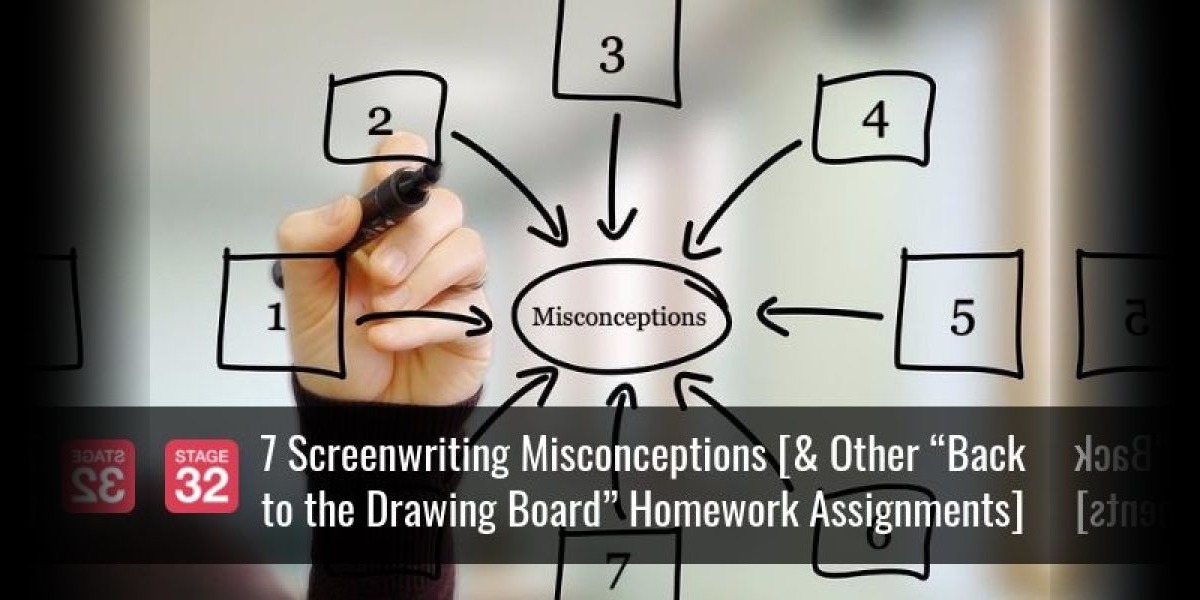7 Screenwriting Misconceptions [& Other “Back to the Drawing Board” Homework Assignments]
Getting into the movie business can plunge you down an endless drain of self-doubt and feelings of worthlessness. At some point, you begin to wonder whether you’re behind the learning curve, missing something, or just plain dumb. Then there comes the complex, then another failure, and then the invisible curse that now seems to follow you around no matter what you do. They don’t call it the Midas touch in reverse for nothing.
But enough of the pity party. The one thing I have always prided myself in is not following the crowd. I’m not like everybody else. When people zig, I zag. I don’t read how-to-do books or listen to inspirational pep talks. For me, experience is the best teacher. I love falling and getting back up. I live, I learn, and then I move on.
When I finished writing a novel back in 2009, I had dreams of getting an agent who would get me on the New York Times Best Seller list. I dreamed of a big advance, the press releases, and the glory. After countless rejections, I got disillusioned. It’s not that I ever thought it was going to be that easy, it’s just that I didn’t think it was going to be that hard.

Maybe I was looking for some magic bullet. Please let me know if and when you find one, because it will save me a whole lot of time and trouble, though I have to say it probably won’t be as much fun. No one likes to do homework today anymore than they did back when they were in grade school. But in the entertainment industry, it is a necessary evil.
I am sure there are millions of writers out there today (and just as many masterpieces) that could have made it to the big screen, had the writer's done one simple thing: Master the art of execution. And how do you execute? It’s simple. You do your homework.
And yet, I hear of so many who are just waiting for things to fall out of the sky and for that euphoric phone call. I, too, have had visions of a big studio calling me to say, “Hey, I read your script. It looks great. I’d love to buy it. How does $100,000 sound?” But it never happened and probably never will.
Naturally, everyone has a different story to tell and a different approach to success. For me, the only way I was able to get my work noticed by a producer or a studio was to do the stuff that others said wasn’t my job to do. “So, if I don’t do it, then who else will?” I always responded.
Reflecting on my early years, I remember being stuck inside this mentality of me just wanting to be an artist, thinking that once I finished writing my masterpiece, that would be it – zip, done, over and out. Ship it out and let other people worry about getting it onto the big screen or into bookstores. After all, I'm a thinker. I read and analyze novels and screenplays. Art is in my blood. Reading spreadsheets and data is not.
That’s why I often failed to understand how the real world worked. Businessmen could care less about your art. Chances are they probably won’t even ask to see your screenplay, even if it’s the greatest in the world, and by the way, “What makes your script so special?”
All they see are big name LOIs.
The movers and shakers.

At the time, concepts like equity and ROI were a foreign language to me. And yet, I wish I would have known then what I know now while writing my novel in 2009. Back then, I had no patience for business. That’s why, after giving up on Agent #100, I decided to go the indie route, and then ended with a shady publisher who took me for a ride with fancy marketing packages and pie-in-the-sky dreams of me hitting it big time. And I fell for it, just like a million other indie authors, I suppose.
But with the movie business, the stakes are a lot higher, especially if your budget is $5 million, which means, unless you have a rich uncle or an angel somewhere, you will have to be dealing with other people’s money. That $4,500 or $5,000 you wasted on your shady book publisher will barely be enough to pay an accredited line producer to do the budget for your screenplay. And even then, the basic principles of business are still the same. If you haven’t done your homework, you’d just as well be shooting paint balls against the wind.
Yes, of course, writing a great synopsis is very important, just as is crafting your pitch to perfection and sending a query letter that will knock the socks off of any producer looking to invest in your product. But that’s just part of the endgame. The bottom rung of the ladder has to be, “How do I not be like everybody else?”
So I decided to make the producer’s job easy by lightening some of the load it takes to get a movie made.
You see, people love to talk a lot (query letter, synopsis, pitch), but what about the action to back it all up (business plan, character descriptions, breakdowns, locations)?
Or to put it another way: If someone handed you $5 million and told you to go make a movie, what would be your first move? It wouldn’t be talk. That’s for sure. (Unless you took that $5 mil and fled to Mexico – but that’s another story.) It would be completing a checklist of things to make the movie happen and to do it in a way that you could get the money back to investors and then some.
It’s the same as if I were asking money for a restaurant that I wanted to set up. I have written this fabulous menu and have fantastic recipes, but I have no locations in mind, no customer traffic analyses, no business plan, no letters of recommendation, no track record that shows that I am even capable of making that restaurant successful. Why then, should it be any different for the movie business? Would it be just because you wrote a great script? Okay. But then what?

These days it’s not enough to just be a writer. You have to think and act like a producer. I’m not saying that you have to do their job, but it wouldn’t hurt if you made their job a lot easier, especially when they’re juggling ten other projects that may show more promise of getting developed than yours. There’s nothing worse than pitching a project to someone and then nothing happens for months on end (also known as “development hell”), and you’re waiting on him and he’s waiting on you and everybody’s waiting on somebody else to step up.
The bottom line: If you want your project to hit the big screen, you will have to do a lot of preparation to get it there. And if not you, then who else?
It took me years to get to the point to where I am at now and I’m still not quite there yet. Writing the script, synopsis, and pitch was the easy part (and another lifetime ago it now seems). But to get noticed by a producer, I had to do a lot more than just talk. I had to show him all of the homework I had accumulated over the years. And not just from research and “learn-as-you-go-along” type of materials, but also the sort of proof that comes from having built relationships that helped guide me as I was learning what a producer was looking for; things that he could then pass along to his money partners (and no doubt there will be many).
This is what I learned:
1. Written Treatment
Besides saving a producer’s time in having to read a 120-page script, a 10-15 page treatment also shows that you are able to explain your story in a concise way that makes the audience to want to see more. If the treatment grabs their interest, then likely so will the script. If it doesn’t, well, at least you didn’t waste a whole lot of his time – only yours.
2. Visual Treatment
If you have a connection to a graphic artist, a visual treatment is also a great way to present your project. In fact, I attached one recently to a query email I sent to a studio and they immediately responded and wanted to know more. All I have to do now is get a couple of A-listers on board. Stay tuned.

 Examples of a visual treatment.
Examples of a visual treatment.
Here is a link to two other visual treatments, Stabat Mater and American Nights, both of which are currently in development. (To view fully and in more detail, click the “Download Synopsis” option on each page.)
3. Character Breakdowns
Besides knowing how many scenes are in your script, do you know how many scenes each character has (including the bit-parts and extras)? Why is this important? Because a producer will want to know when taking into account budget considerations, scene layout, scheduling, not to mention, if you’re lucky, positioning A-list talent to get on board. And chances are, an A-lister is not going to be interested in your project if his character only has five scenes. With the breakdowns, you’re able to see everything from a glance without having to comb through a 120 page script.
 Character Breakdowns
Character Breakdowns

Character Breakdowns Per Scene
4. Character Descriptions
Descriptions are not only about describing your characters, but also placing them into a narrative so that they come alive. I also like pictures with my story, because while I may have had Ben Kingsley in mind when I was creating a particular character, I also knew that if he was unavailable, maybe my producer would know other actors who could fit the visual profile.
 Character Descriptions Character List
Character Descriptions Character List
 Visual Treatment Character Descriptions
Visual Treatment Character Descriptions
5. Location Descriptions
Every scene that you have in your script should translate easily into a photo which you can show to your producer. Yes, this involves a lot of work, especially if your feature film has 200 scenes, meaning that you’re probably going to have about 120 pages of photos. Question is, it’s worth the effort?
 Locations Description Breakdowns
Locations Description Breakdowns
 Locations Description Sample
Locations Description Sample
Well, suppose most of your scenes are in Washington, DC but your producer knows a line producer who not only has access to almost identical locations in Lithuania but can also secure them at any time because he has connections with crews already stationed there, not to mention Lithuania currently has a 25% tax rebate. Again, by doing comparisons, you’ve made it easy for your producer to plan alternatives and to move a few steps faster towards pre-production.
6. Budget
You can’t do anything until you have a budget in place, which is why all of the other items I previously mentioned are so important. Once the producer has a handle on locations, character breakdowns and possible attachments, he can start working with the director to finalize a budget.
7. Business Plan
Writing a business plan can be tricky. It’s like the chicken or the egg dilemma. How can you write a plan when you don’t have a director, A-list actors, or a production company on board yet? The answer: You create a wish list and an outline based on your research, and then you fill in the blanks as your project develops. You can also rest assured that you will be doing as many rewrites for your business plan as you did for your screenplay. But once you have an outline and format in place, you can at least begin addressing certain areas to turn them into reality, such as –
a. What are you comparing your film to (list at least three films)? Why is yours different? And why should the audience care?
b. What is your projected timeline?
c. Who is your production company, post-production company, director, A-list actors, distributor, etc.?
d. Where are the biographies of all of your key players? What projects have they done?

And the list goes on. But hopefully, you get the point. There are never enough angles when it comes to preparation. Indeed, one of the biggest misconceptions I had when entering this business was that inevitably you reach a certain point where you can begin to feel comfortable and victorious. Yet the truth is, even after your script hits the big screen, there is still no guarantee that all of those years of homework and efforts have paid off.
Then again, marketing is a real bitch, isn’t it?

Lee Chavis' professional writing career began with his first novel A Dance in Paradise, published in 2010 by Amazon.
Chavis’ interest in entertaining audiences led him to filmmaking. Shortly after A Dance in Paradise was released, Chavis wrote, directed and produced the novel's trailer now featured on YouTube and Vimeo.
Around the summer of 2012, he began collaborating with Karim Lounes on his first feature film, The Last Immortal, about a warlock who seeks revenge against a chemist after an ancient ritual goes awry. In 2017, he completed The War Necklace with Conchita Franco Serri, about love, betrayal and a family divided during the Venezuelan wars of independence.
His latest script, Never Again with George Kottaridis, centers around a covert agent seeking justice for the murders of his parents and wife that eventually exposes the underbelly of an international human trafficking and drug cartel operation. All three projects are currently in development.
Chavis recently signed with Harris Management, a Los Angeles-based talent management company focused on a select group of actors, directors, writers and recording artists. Thereafter, the company issued a press release saying, “[Lee Chavis’] scripts have garnered the attention of international film developers and Hollywood players and he is now ready to see the words moved to the big screen. Thus his decision to join forces with Harris Management.”
Chavis responded, "I am honored to have been accepted by the team of Harris Management. As a screenwriter, you continuously face uncertainty and countless disappointments while looking for that big break in your career. It is comforting to know that someone like Earnest Harris, with his expertise and guidance in moving many mountains throughout his many years of being in the movie business, has enough faith in my writing ability to advance my projects towards the big screen. I am thrilled to no end."
Like this blog post? Please share it on social media (Facebook, Twitter, LinkedIn, email etc) by using social media buttons at the top of the blog. Or post to your personal blog and anywhere else you feel appropriate. Thank you.
As always, we welcome thoughts and remarks on ANY of the content above in the Comments section below...
| From the Writer of Jigsaw: 8 Rules For Creating Online Content |
| Monday Motivation: A Pitch Session Leads to a Meeting During the Beverly Hills Film Festival |
Search Stage 32 Blog
There are now 4042 blog posts for you to enjoy. Search them all by tags below.
Acting, Advice, Cinematography, Coffee & Content, Composing, Contests, Distribution, Featured, Filmmaking, Financing, Inspirational, Networking, Producing, Screenwriting, Success Stories, Tips, Trending,Relevant Tags
Recommended Articles

Coffee & Content: Reinvent the Story, Reinvent the Industry

Find Your Footing on Stage 32: Join Our December Community Open House

4 Reasons To Have Audio Description On Your Film

Coffee & Content: The Genius of Weapons and How to Know When Your Script Is Ready

Want Success in the Entertainment Industry? Start Writing Your Own Narrative

What Stage 32's Community Is Really About (Beyond Scripts, Sets, and Showreels)

How to Get Help from Stage 32: Meet the Teams Behind the Scenes

Stage 32 Now Certifying Centro de Portugal Film Commission!

Stage 32 Featured at the 43rd Torino Film Festival!






